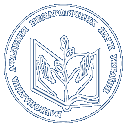- Пометун, Олена Іванівна (orcid.org/0000-0002-4602-6383) and Гупан, Нестор Миколайович (orcid.org/0000-0001-8613-9705) (2023) Textbook for the Integrated Course “Exploring History and Society” as a Method for Development of Critical Thinking in 6th and 5th Grade Students Проблеми сучасного підручника (31). pp. 161-173. ISSN 2411-1309
|
Text
Пометун Гупан ПСП 31.pdf Download (309kB) |
Abstract
This article addresses the issue of designing a modern history textbook aimed at fostering the development of critical thinking in students. It is noted that the solution to this problem should consider existing approaches in contemporary methodology history for selecting and structuring educational content for 5–6 grade textbooks, types of student activities, corresponding cognitive tasks, and the organization of history lessons within the context of competency-based education. On the other hand, all aspects of implementing critical thinking development technology must be considered. The analysis and synthesis of experience in developing a textbook for the integrated course “Exploring History and Society” confirms that a competency-oriented concept of the textbook allows for the incorporation of critical thinking development technology into the textbook’s structure. The text defines the essence and basic components of the pedagogical technology for developing critical thinking. It characterizes the tools for fostering critical thinking in education used by teachers, including the formulation of questions of various types and levels by both teachers and students (and answers to them) regarding various sources of information: textual, visual, and verbal. Additionally, it describes students’ resolution of cognitive tasks aimed at achieving higher-level learning outcomes (analysis, synthesis, evaluation) and special methods/ strategies for developing critical thinking. The text explains how these tools work in the educational process and how their use can be projected into the textual and extra-textual elements of the textbook’s methodological apparatus. It is demonstrated that such implementation enriches the methodological apparatus of the textbook, enabling teachers to organize students’ active learning diversely and effectively, consciously monitor the growth of students’ critical thinking, and systematically enhance the quality of the educational process.
Downloads
Downloads per month over past year
Actions (login required)
 |
View Item |




